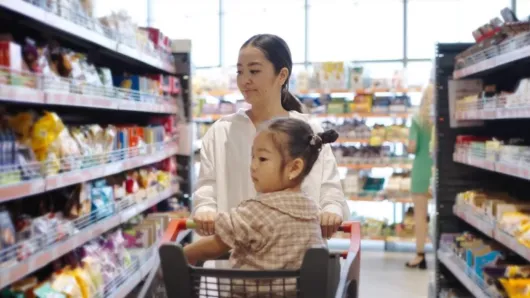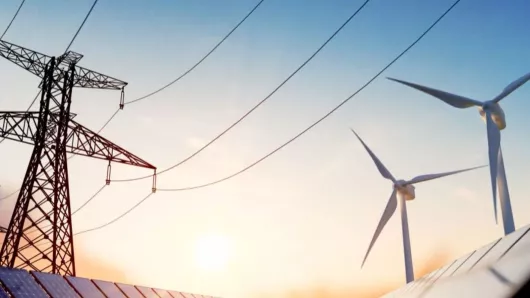You might look at this and think it's just paper. But when it comes to recycling paper-based products, the complexity can be as broad as the packaging types. Depending on what part of the world you live in you might be dealing with multiple paper recycling streams, varying regulations on food and drink contamination, acceptable moisture content, and factors like virgin versus recycled material sources. It's easy to see where the assumption comes from that multi-layer materials and food contact materials simply can't be recycled due to the contamination levels. But with today's advances in recycling technology and emerging partnerships in the US and across the EU, this is quickly becoming an outdated myth. Let's unpack these developments together.
Understanding the Recycling Stream
An interesting challenge to understand is that paper recycling can work very differently depending on where you live. While the United States has generally transitioned towards a single stream recycling system, Europe has kept or expanded dual or multiple stream collection. This means that while sortation for a consumer is simpler in the US, sortation at the material recovery facility is more complicated.
Generally here in the US material is first broken down into two components. First, there's the 2D stream now, that's everything that's flat- from traditional cardboard, to mailers and things you find around your house, like office paper. Then you have the 3D stream or containers. Here, paper-based products with multiple dimensions, like cups, cartons, or rigid paper cans actually get sorted in the same initial stream as plastics and metal cans before being separated at the material recovery facility.
So you actually have bales of fiber material, like grade 52, which is dedicated to aseptic and gable top cartons, being sorted off of the container line. Now, to make matters more complicated, within these two material pathways, there are different grades of materials. Some, like OCC or cardboard, are essentially universal, while others like that aseptic and gabletop carton bale are a bit more bespoke. Each grade has different rules on prohibitives, contamination levels, collection processes, and sometimes even different names for the same type of products depending on which country you may find yourself.
It's quite complicated. But in every case you have a common supply chain of collection, sortation, and then recycling and market. So when we consider how to repurpose more materials and redirect them from landfills into these recycling streams, that's where the opportunity lies, and that's where we're putting tremendous effort into understanding how we can incorporate more of these materials into the existing recycling value chain around the world today.
Increasing Recyclability
There's a lot of work being done in the labs. Especially here at Sonoco. To better understand how we can process and repurpose materials like these paper-based food and beverage containers, whenever a new source of fibrous material becomes available, we evaluate that in the lab first. We start with repulpability. Can it be disintegrated and made in the paper with an acceptable yield? Then we look at fiber quality and examine various non-fibrous contaminants in paper-based multi-material packaging. And finally we project the physical properties of the resulting paper.
In addition, we strive to understand potential runability issues. In other words, whether using the recycled fibers in question will result in any production issues during the paper machine process. In our labs we can take this new fiber source and slush it down simulating the pulping process in the mill, screen it, and see what percent of reject it generates. We can then evaluate various residual non-fibrous contents in the accepted fiber stream such as sticky materials, wax, plastic, metal, or other contaminants, and what impact they may have on the visual or other aspects of the resulting paper.
One may wonder what happens to the food and beverage residues that may come with some of the multi-material packaging? Are they part of the contaminants? Well, residual beverages are generally washed away by processing water. As for residual food particles, given the estimated low percentages of these multi-material packages in a recycled veil, that is not expected to be any higher than what is already in some of the existing recycled fiber grades. The physical properties of the sample paper made in the lab are typically evaluated and compared with a known grade of recycled fibers. While making this comparison, we're also examining how easily excess water can be removed from a wet web of these fibers to better understand whether the same physical properties can be achieved at the same or better paper machine speed.
If it's the same? Excellent. If not, it doesn't mean we can't recycle it, but we might have to slow down the machine with a certain material source based on fiber quality. After that extensive process, the end result is that we can look at just about any fiber source in the recycling stream, and arrive at a recommendation of how those fibers can be used, how they should be graded, and what we can expect in terms of yield loss.
European Partnerships Drive Success
Partnerships are proving to be the key to success in Europe. Working with Ace UK, we've created a joint venture called Tessa to process liquid packaging material and recover this high quality virgin fiber back into the paper stream and with Ace UK's support we've leveraged their contacts with the local councils and all of the supply chain throughout the UK to really make an impact on this one particular paper product, that was otherwise considered unrecyclable.
Similarly, in other parts of Europe, we're working with partners to address aseptic cartons, rigid cans, cups, and freezer board. We're helping lead these innovations, but really it's a process beyond just us. What we found is that for many of these products, it's not about the specific pulpers capabilities, as much as how systems need to be able to handle the heavy rejects due to the fact that the fiber yield is only about 65%. In the United States, Sonoco is not only looking at the issue from the perspective of our recycling facilities, but from our paper mill stock prep systems as well. Our investments here in Hartsville, South Carolina's project horizon stock prep system makes it more capable than Sonoco's other North American mills.
With this new facility online, we're able to process higher quantities of commercially available grades of mixed paper, including those that may have a higher level of contamination or non-fibrous material. The cleaning and screening processes are more advanced. We can remove grit, like glass and sand, and we can screen out styrofoam and wax via cyclone. When you consider that we'll be providing approximately 650 tons of recycled fiber per day to our machines from a wide range of commercial and residential sources, including items like paper cups and rigid paper cans, this is a tremendously forward in the types and ranges of mixed paper that Sonoco as a company can accept and turn back into usable quality paper stock.
Through a series of third-party sortation trials, we found that the steel bottoms of paper containers can be recycled in the steelstream. And Sonoco has also confirmed that the fiber in these cans can be recycled in Sonoco's standard paper mills. However, it has also been important to prove that recycling paper cans is feasible outside of the Sonoco mill network. One exciting project in the US has been a joint trial between Sonoco and Systana that confirmed that during Systana's pulping process the fiber components and non-fiber components can be separated from one another. These fiber components can then be recycled into usable paperboard for new products at their facility.
Conclusion
As technology continues to advance it's becoming less about whether these things can be recycled, and more about working together in a cooperative ecosystem between the material recovery facility the labs and the organizations and alliances driving collections and sorting. When we all work together, we can take the technical challenges, the economic realities, and the consumer behaviors and find a path forward that keeps more of these unique paper products out of the landfill and back into productive post-consumer recycled content. And that's this episode of sustainability unpacked.


